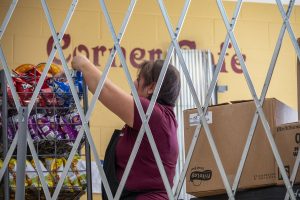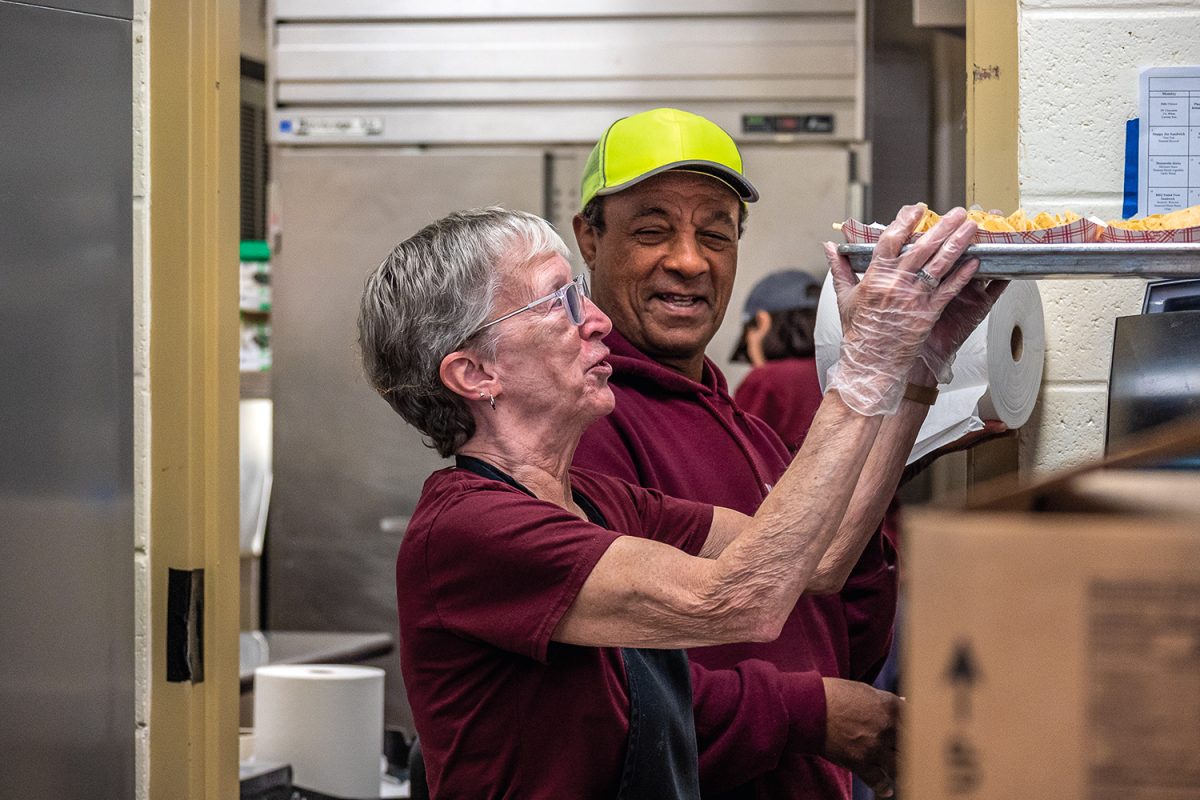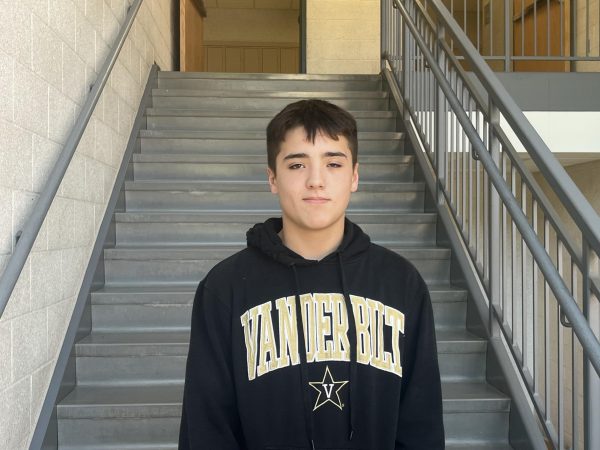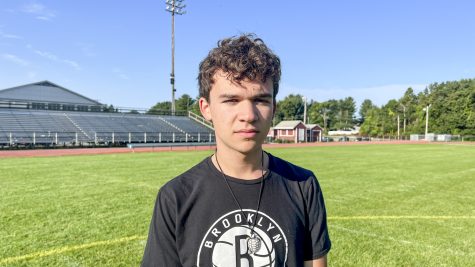The COVID-19 pandemic has led to various changes for Algonquin’s lunch, such as free meals for all students, staff shortages and a smaller selection of snacks.
ARHS students have benefited from the Massachusetts government’s implementation of free lunches for every student. Nonetheless, students are left wondering where past cafeteria staples such as the Corner Cafe and vending machines have gone.
According to Cafeteria Manager Diane Cofer, most of these changes root back to the COVID-19 pandemic and its effect on the school community. Following the COVID-19 outbreak, the cafeteria staff had to let go of three employees, which Cofer said directly led to the closure of the popular Corner Cafe where students were able to purchase food items such as pretzels, chips and ice cream.
Cofer anticipates positive changes in the future and hopes to balance out the lunch rush after hiring two new staff members to help in the corner cafe who’d substitute in for lunch workers if someone is out.

“We hired two new people…so that’s huge,” Cofer said. “We just hired them to be trained and acclimated to the kitchen. [However,] if a lunch lady is out we would want the Corner Cafe staff to fill in.”
ARHS students have enjoyed the corner cafe for years, and its absence has left its loyal customers searching for alternative options off-campus to purchase other food. According to a Harbinger survey of 141 students conducted through Google Forms from Dec. 12 to Dec. 17, 65% of respondents said they will purchase food from the Corner Cafe at least once a week following its reopening.
The survey also indicates the reopening of the Corner Cafe may keep some of the 19% of students who occasionally leave campus for lunch on campus because of increased options.
Senior Maya Rajguru frequently leaves school during lunch.
“I used to buy ice cream or a pretzel [at the Corner Cafe], but now I don’t because there’s no option,” Rajguru said.
Since the Corner Cafe closed, chocolate chip cookies have continued to be sold at registers and are a popular treat. According to the Harbinger survey, 55% of students buy at least one cookie per week.
Additionally, faculty members recall years before COVID-19, when things such as vending machines, soup and a sandwich bar were a part of the daily offerings.
“I miss the soups they used to make; they didn’t come back after COVID-19 but they were really good,” English teacher John Frederick said.
Frederick, who frequently purchases the school lunch, knows the cafeteria must follow USDA guidelines and appreciates that the food is healthy. However, he understands why students may want to be able to purchase less healthy options.
“Eating unhealthy tastes better,” Frederick said. “I think that’s a fact, unfortunately.”
Frederick believes the cafeteria has been increasingly strict about nutrition following policies promoted by former First Lady Michelle Obama. Similarly, since the pandemic, lunches have been completely free as an extension of the National School Lunch Program.
“I think [free lunch] is great,” Principal Sean Bevan said. “I think it’s something a resident of Massachusetts can be proud of.”
Cofer says that there are many moving parts to the free lunch, and the strict regulations that come with free lunches have added challenges to the job.
”There’s more steps to [how the cafeteria works],” Cofer said. “With the free lunches, we were just so busy.”
Cofer overall agrees with Bevan and is glad that the free lunch is permanent.
”I think it’s a good thing; I think that it’s enabling all students to definitely take advantage of school meals,” Cofer said.













